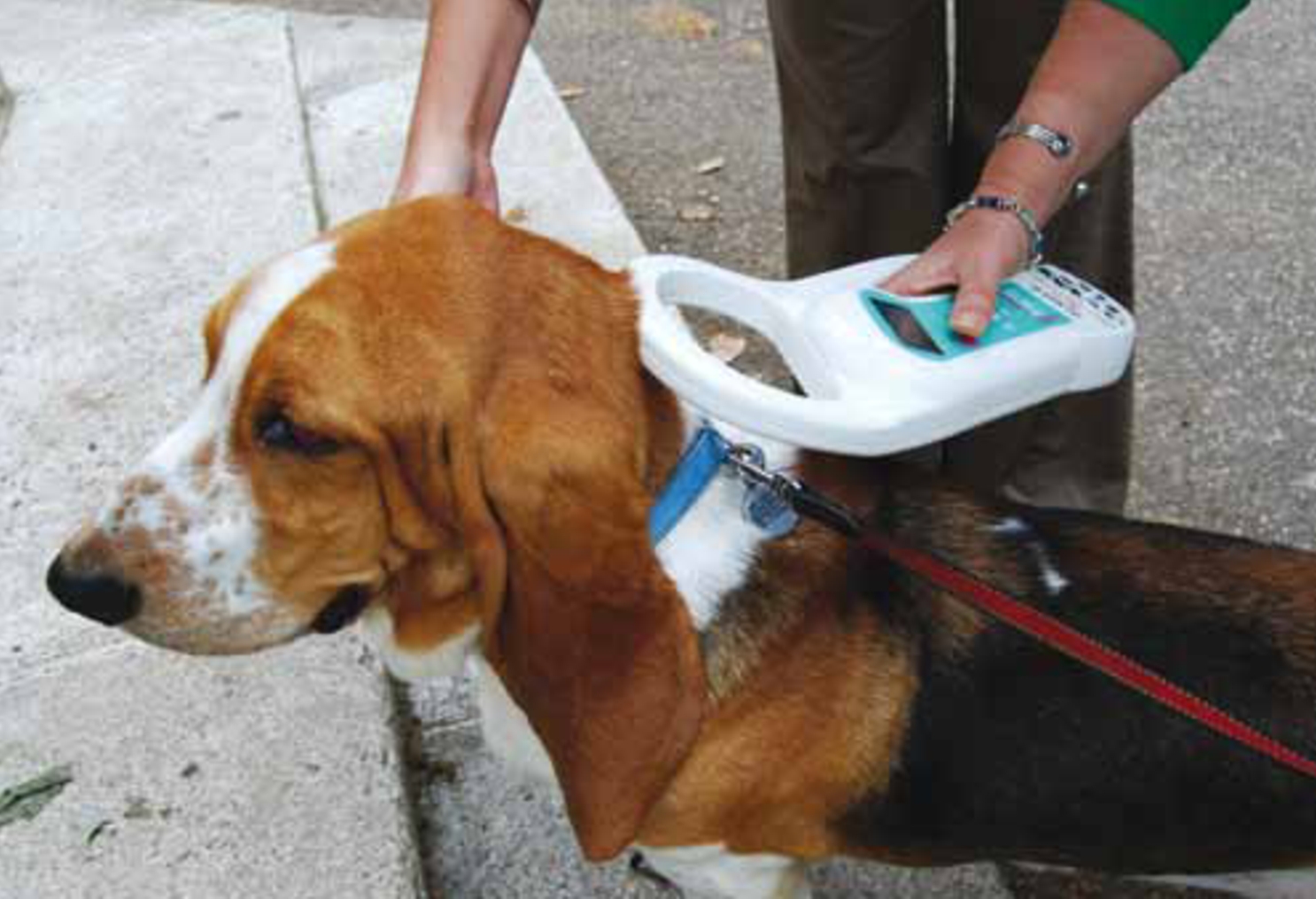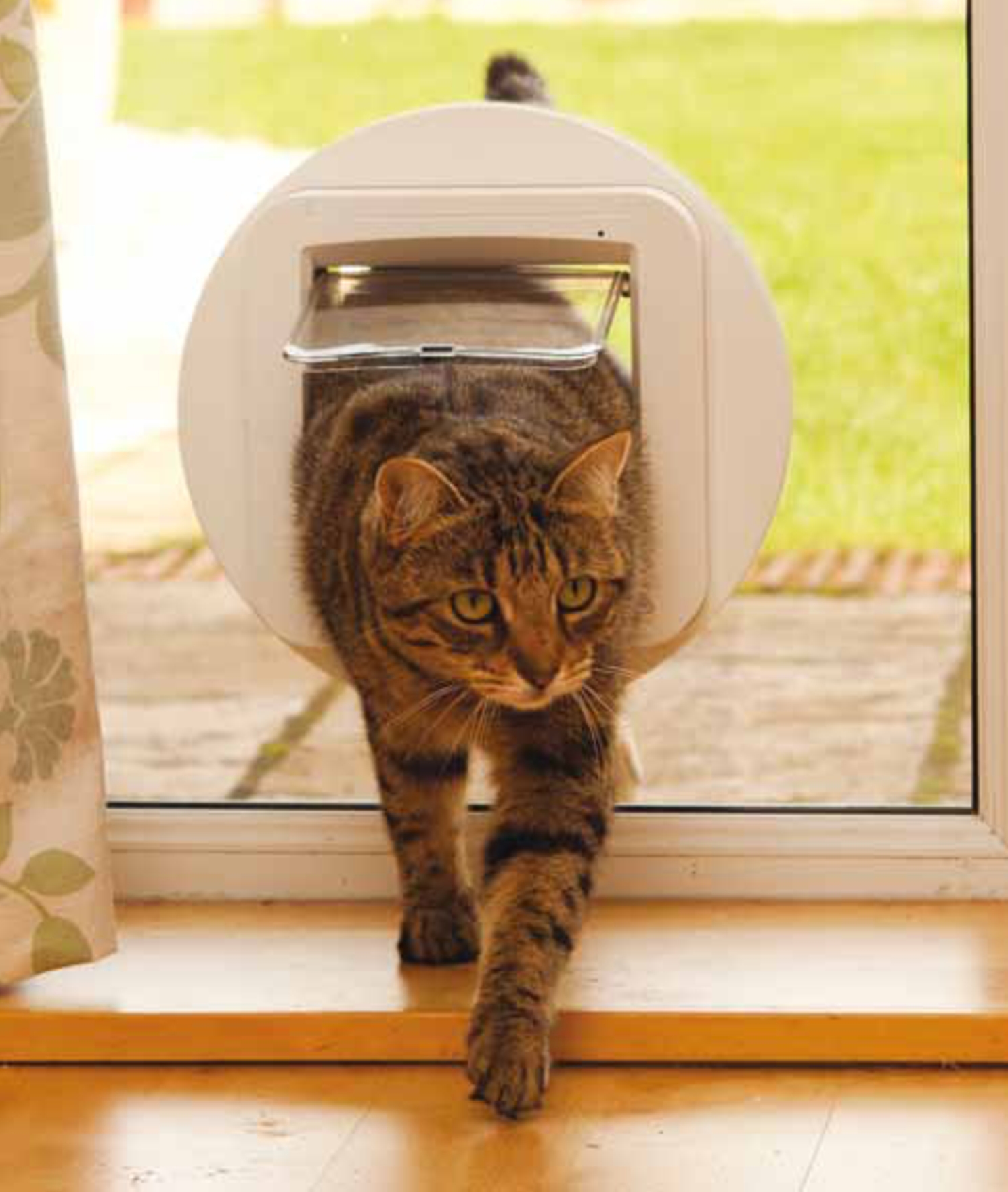In 1989, the small but significant microchip was introduced to the UK market from the USA. Just slightly larger than a grain of rice the microchip is a radio frequency identification device (RFID), it operates without batteries and is activated by a low-frequency emitted by scanners. Once activated a 15 digit identification number is presented which will have been registered with a microchip database and linked to the pet and its owner.
Animalcare was the first microchip database on the UK market with the idENTICHIP microchip, although Datamars, manufacturers of Tracer Advance had been developing other state of the art RFID products since 1988. Avid, had been manufacturing microchips in other countries since 1985, but only came over to the UK in 1991 and in 1995 the Kennel Club set up the Petlog database which is now the UK’s largest.
In 1996, the Microchip Advisory Group was set up by the British Small Animal Veterinary Association (BSAVA), since then it has been responsible for monitoring the success of the microchipping industry as well as identifying and subsequently rectifying any problems.
Also in 1996 the International Standards Organisation (ISO) developed standards for a single frequency microchip. This was a vital development in microchipping as it meant all chips could be activated by the same scanner. Before this standardization came about, pets that were chipped may have been missed by a scanner with the wrong frequency for the chip.
Different microchips
There are 15 different microchip manufacturers operating in the UK and four lost and found databases. Petlog, an independent database, work with 11 accredited suppliers and Anibase (owned and operated by Animalcare) work with their own microchip and one other accredited supplier, while Avid and Pet Protect work solely with their own microchips.
Veterinary nurses should be aware that there are differences between microchips such as size and materials used, these should be checked directly with the microchip supplier or via their website. The differences in implanter devices are more obvious however, and something that seems to be of personal preference. Some are pre-loaded into single use syringes while others can be loaded into an implant gun or screwed into a re-useable syringe. The important factor is ease of use for the implanter.
Implanting the chip
For dogs, cats, rabbits and ferrets, the chip should sit mid line in between the scapulae (shoulder blades) after implantation. The entry point of the needle is just beneath the thumb at an angle of about 20 degrees. It is important to chip towards the animal’s head and only expel the chip when the needle is between the scapulae. The implanter should pinch the skin around the needle, when it is still inserted, to ensure the chip does not come to the surface by means of the suction pressure created when withdrawing the needle.
If a microchip is correctly implanted then migration is a very rare occurance; a microchip should be scanned first in the packet prior to implantation, and then the animal should be scanned once the microchip is implanted to ensure the microchip can be read. In the past there were some cases where microchips were not recognized by certain scanners, however, these have generally been older chips (before the introduction of the ISO standard) and is a very rare occurrence with the modern chips.

Implantation of the microchip by a veterinary nurse is down to the veterinary practice, as officially microchipping is seen as an injection and as such veterinary surgeons and veterinary nurses are not specifically trained in implanting microchips. They should therefore adhere to practice and manufacturer guidelines
Almost any animal big enough can be microchipped; most animals at London Zoo have been microchipped, for example, so that they can be easily identified to help monitor breeding levels and consult medical and historic records. The microchip has also been used in the wild, where it has been implemented to identify endangered species in conservation programmes. However, microchips are most commonly used in household pets.
Registration
When registering a chipped animal there are also a few different options depending on preference and which database is chosen, most databases will give the option to go online and complete via PMS or register by manual paperwork.
When a pet is chipped the owner incurs a fee, this covers the veterinary surgeon’s costs and time, as well as the cost of the microchip; very little of the fee goes to the microchip databases. This is why microchip databases will often charge a fee later down the line, such as when updating contact details or a renewal fee. Not all pet owners may be aware of this and so to help them make an informed decision it is best to know how each chip and database operate.
To help tackle unexpected costs however, some databases have created a package people can upgrade to for a one off cost and will then face no other charges throughout the lifetime of their pet.
With the relaxed rules on pet travel a number of databases came together and there are now two pan European databases; European Pet Network ( EPN), a fully functional active database connecting over 32 databases across Europe, and Petmaxx a microchip specific search engine. Petlog subscribe to EPN and Anibase to Petmaxx. These organizations are able to share information so if a pet goes missing in a different country to the one it was registered in, their owners can still be tracked down.
The future
Microchips are becoming more and more popular and can be used to help tackle a variety of issues: as well as helping reunite pets and owners and reducing the numbers of stray dogs it is also suggested that in the future microchips could help to tackle dangerous dogs and even puppy farming by tracing the owners, pervious owners and breeders of a dog recorded on the database under the dog’s microchip number.
It is now possible for owners to install a cat flap that identifies the cat by its unique microchip number, and which acts as an electronic door key (Figure 2) and which gives the microchip a secondary use. Reunification however will always be the most important aspect of a microchip and this is the service that is required by veterinary professionals and pet owners alike. It is important to check which microchip is used and which database it is connected to as not all databases operate a 24/7 service and the levels of service and the extras on offer will differ between databases.


